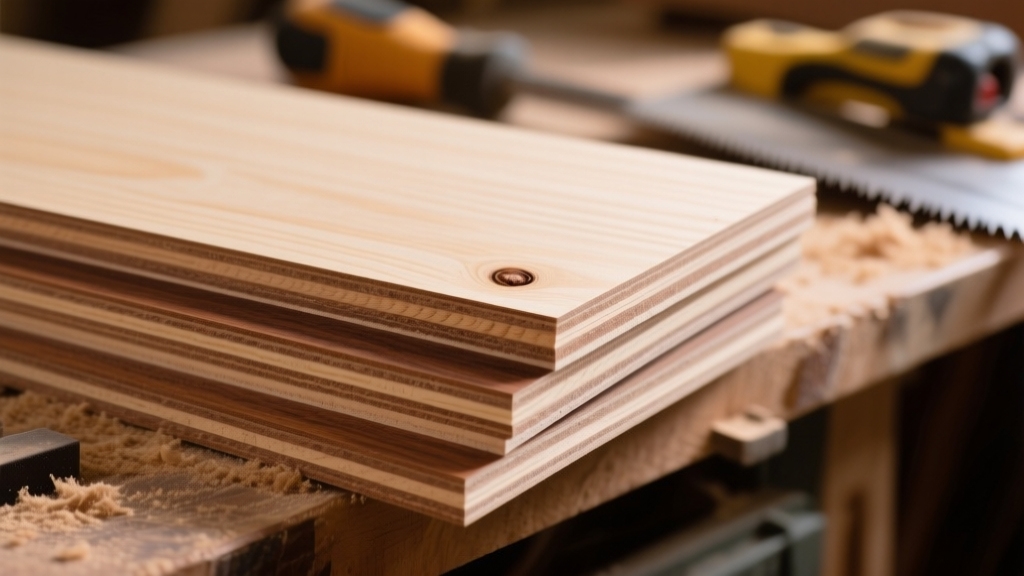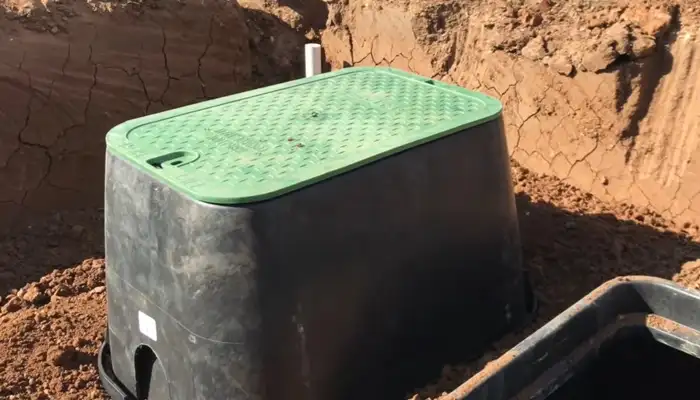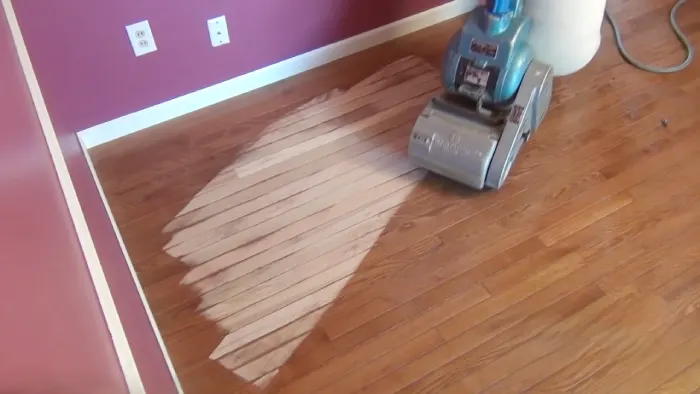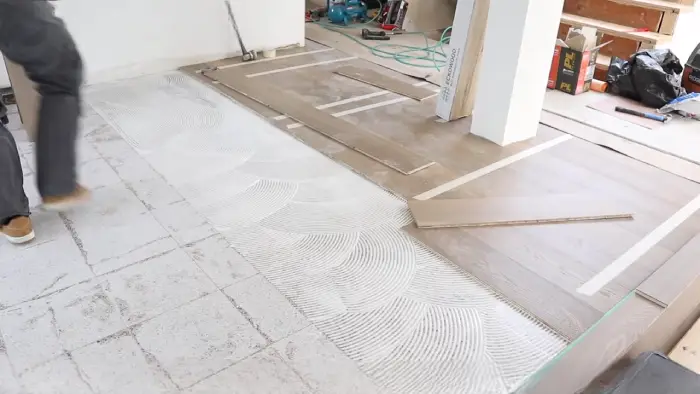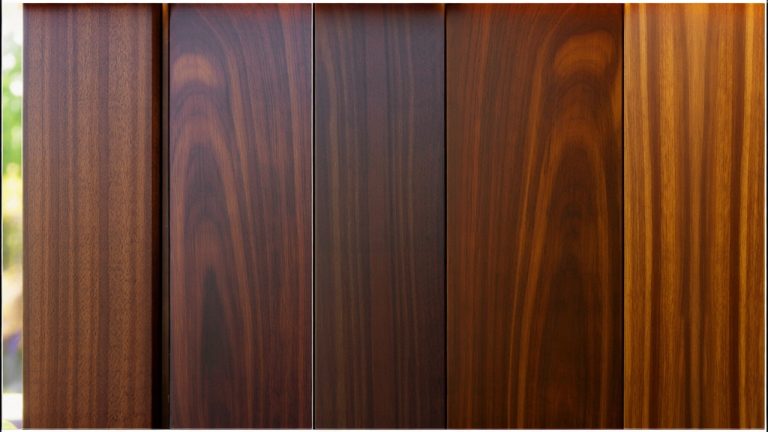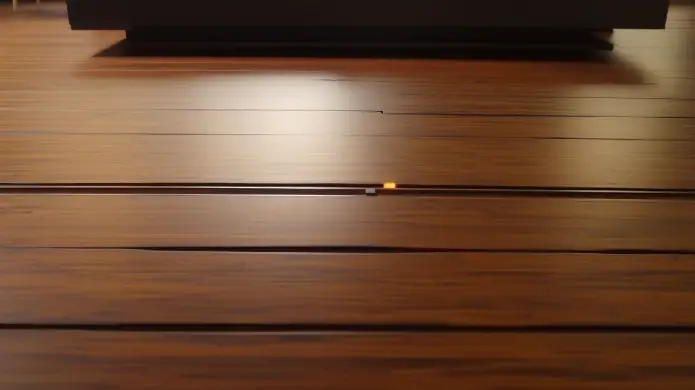What Is Hardwood Plywood: Stands Out in Quality and Design
Hardwood plywood is an engineered wood panel made by bonding multiple thin hardwood veneer layers with adhesives under heat and pressure. The veneers, commonly species like oak, maple, or cherry, are arranged with grain directions alternating perpendicular to each other, increasing strength and dimensional stability.
This cross-graining reduces warping and provides a smooth, durable surface suitable for furniture, cabinetry, and flooring. Understanding its composition and manufacturing details will help you choose the right plywood for your project’s needs.
Key Takeaways
- Hardwood plywood is an engineered wood panel made by bonding multiple thin hardwood veneer layers with adhesives in a cross-grained configuration.
- It features an odd number of veneer layers with grains running perpendicular, enhancing strength, stability, and resistance to warping.
- Outer veneers are high-quality hardwood species like maple, oak, or cherry, providing durability and an attractive surface finish.
- Manufacturing involves steaming logs, slicing veneers, drying, grading, then hot pressing with thermosetting adhesives under heat and pressure.
- Hardwood plywood is widely used in furniture, cabinetry, flooring, and construction due to its strength, smooth surface, and aesthetic appeal.
Definition and Composition of Hardwood Plywood

Although you might already be familiar with plywood in general, hardwood plywood specifically refers to an engineered wood panel made by bonding multiple thin layers of hardwood veneer with adhesives.
Each layer’s grain runs perpendicular to adjacent ones to guarantee strength and stability. This cross-grained design significantly enhances the panel’s durability and resistance to warping.
Hardwood plywood is crafted by layering hardwood veneers with grains at right angles for lasting strength.
You’ll find that all layers, or plies, come from hardwood species, with outer veneers selected for higher quality to provide durability and a smooth, attractive surface. The core layers may use lower-grade hardwood veneers but maintain the hardwood classification.
Regular maintenance, such as sweeping hardwood floors, helps preserve the appearance and longevity of hardwood materials. These plies are pressed together under heat and pressure with strong synthetic adhesives, resulting in a panel designed mainly for interior applications such as cabinetry and furniture.
The number of plies varies to achieve different thicknesses, typically ranging from 3mm to 25mm, balancing strength and weight effectively.
Common Hardwood Species Used in Veneers
When it comes to hardwood veneers, you’ll often come across some favorites like maple, oak, cherry, and walnut. Each of these species has its own unique grain patterns and levels of durability, which makes them really appealing for various projects.
Now, when you’re choosing the right veneer, think about some key characteristics. For instance, hardness, moisture resistance, and color tone can all vary depending on the species and where it’s sourced from.
Oak is especially preferred for its ability to withstand environmental factors, making it a durable choice for furniture and cabinetry. Additionally, understanding the moisture resistance of each species helps in selecting veneers that will maintain their integrity over time.
Popular Hardwood Types
Oak, maple, and walnut stand out for their balanced performance and visual qualities. Oak veneers, including red and white variants, offer strength and distinct grain patterns. White oak also provides superior moisture resistance.
Maple veneers, especially hard maple, deliver a light, uniform grain with high scratch resistance. This makes them ideal for modern, high-wear applications. Walnut veneers, prized for rich dark tones and swirling grains, add warmth and luxury.
However, they’ve moderate wear resistance. Mahogany and cherry veneers bring deep reddish hues and fine grain textures, favored in premium woodworking. Using appropriate cleaning products like pH-neutral hardwood cleaners helps maintain their finish and durability.
Exotic species like teak, rosewood, and ebony serve specialized roles, valued for water resistance and striking grain. Teak veneer is highly resistant to water and weather, making it ideal for outdoor furniture and marine use due to its longevity and resilience.
Characteristics of Veneer Woods
When selecting hardwood veneers, you’ll find that each species offers distinct characteristics affecting both appearance and performance.
Oak displays prominent flake grain and ranges from light tan to medium brown. Regular maintenance and proper care can help preserve the oak’s natural beauty and prevent surface damage like scratches.
Walnut provides rich tones with swirling grain patterns, ideal for both traditional and modern designs.
Maple is lighter with subtle grain, sometimes showing mineral streaks. Using preventative measures such as felt pads and controlled humidity helps maintain maple’s delicate finish over time. Cherry darkens over time, featuring reddish-brown hues and gum pockets.
Mahogany offers a consistent reddish-brown color with straight grain, prized for high-end applications. Veneers are typically very thin sheets of real wood that are sliced or peeled from logs and adhered to substrates for use in furniture and decorative surfaces.
| Species | Grain Pattern | Color Range |
|---|---|---|
| Oak | Flake (fleck), prominent | Light tan to medium brown |
| Walnut | Swirling, deep grain | Light to deep chocolate |
| Maple | Subtle, sometimes streaked | Nearly white to light amber |
| Cherry | Smooth, with gum pockets | Pinkish to rich reddish-brown |
Regional Hardwood Sources
Although hardwood veneers come from many global sources, understanding regional species helps you select materials based on availability, performance, and appearance.
In North America, species like Sugar Maple, Red and Silver Maples, Yellow Birch, and both Red and White Oak dominate due to their density, grain consistency, and moisture resistance.
These veneers are often used in furniture and cabinetry, where their natural finish and distinctive grain patterns add aesthetic value. Proper preparation and moisture control are essential to maintain the quality of these hardwood veneers during installation.
European veneers commonly include Beech, European Oak, Ash, Hornbeam, and Walnut, valued for fine texture and durability. Large panels of these species are also suitable for applications like wall lining or acoustic panels, expanding their functional use. Ensuring compatibility with subfloor and installation methods can enhance the longevity of products made from these veneers.
Tropical and exotic options such as Mahogany, Teak, Sapele, Wenge, and Zebrano provide unique aesthetics and specialized properties like weather resistance or striking patterns. Selecting the right veneer grade, such as A/A or A/B, ensures the desired appearance and structural integrity for your project.
When specifying plywood, domestic veneers like American White Oak, Cherry, and Black Walnut offer reliable performance and visual appeal.
Knowing these regional species allows you to tailor veneer selection to your project’s functional and aesthetic demands efficiently by considering factors like subfloor compatibility and installation techniques.
Cross-Graining and Layer Arrangement
Because hardwood plywood relies on cross-graining, the grain of each veneer layer is oriented roughly 90 degrees to the adjacent one, creating a balanced, cross-laminated structure.
Hardwood plywood’s cross-grain layering forms a strong, balanced, and stable cross-laminated structure.
This alternating grain pattern enhances rigidity, distributes loads evenly, and minimizes warping, cupping, and twisting. Each layer’s grain direction counteracts movement in the layers above and below, greatly improving dimensional stability under moisture fluctuations. This principle is similar to how engineered hardwood flooring layers are constructed to resist moisture and temperature changes.
Hardwood plywood typically contains three or more thin veneer plies, stacked with grains rotated successively at right angles. The number of plies determines thickness and strength, with each layer supporting the next.
Using species like maple, oak, and birch, this arrangement ensures uniform strength and resistance to cracking. This makes hardwood plywood a reliable material for structural and furniture applications requiring both stiffness and flexibility. Its core typically consists of lighter hardwoods or Poplar, balancing strength and weight.
Adhesives and Bonding Techniques

When working with hardwood plywood, you’ll come across a range of adhesives. For instance, PVA is great for interior projects, while phenol-formaldehyde is a better choice for outdoor applications. The selection really depends on what you need in terms of strength and moisture resistance.
Proper surface preparation, including sanding and ensuring surfaces are dry and free of debris, is crucial for achieving a strong bond surface preparation. Control moisture levels during the bonding process to prevent warping and ensure durability.
Now, let’s talk about the hot pressing process. It’s pretty important because it uses heat and pressure to cure the adhesive and effectively bond the layers together.
Types of Adhesives
Consider your project’s environment and performance needs. For indoor applications with low moisture, polyvinyl acetate (PVA) adhesives offer ease of use and safe cleanup. PVA is a water-based adhesive widely used for its strong, durable bonds and affordability.
Ensure that surfaces are thoroughly dried before bonding to achieve optimal adhesion. If you require strong interior bonds, urea-formaldehyde (UF) adhesives provide durable adhesion but lack moisture resistance.
For exterior or high-moisture exposure, phenol-formaldehyde (PF) or resorcinol-formaldehyde adhesives ensure waterproof, weather-resistant bonds.
Polyurethane adhesives excel when bonding wood to non-wood substrates like concrete, thanks to their moisture-curing properties. You must prepare clean, dry surfaces and apply adhesives evenly. Using proper clamping pressure during curing is essential to enhance bond strength.
Ensure adequate clamping pressure during curing. Wood density affects adhesive penetration, so select formulations and pressures accordingly. This technical matching optimizes mechanical interlocking and chemical bonding for maximum joint strength.
Hot Pressing Process
When you apply heat during the hot pressing process, thermosetting adhesives like phenol-formaldehyde (PF) and urea-formaldehyde (UF) activate and begin cross-linking to form strong, durable bonds. The heating system in the plywood heat press uses electric or steam methods to ensure uniform temperature distribution across the wood surfaces.
Press temperatures range from 90–140°C, with PF requiring 115–140°C for ideal curing. Hydraulic or pneumatic systems apply pressures between 0.8–2.5 MPa, ensuring intimate veneer contact. Precise control of time, temperature, and pressure is critical to avoid veneer damage while achieving full adhesive cure.
Key considerations include:
- Heating via steel platens with steam or electric systems for uniform temperature.
- Pressure tailored to wood species and adhesive type.
- Pressing time based on plywood thickness and adhesive kinetics.
- Moisture control (4–6%) to prevent defects like delamination.
Thickness and Veneer Layer Count
Understanding hardwood plywood thickness and veneer layer count is essential for selecting the right panel for your project.
Thickness ranges from 1/8″ (3.2 mm) to 1.5″ (38 mm), with common nominal sizes like 1/4″, 1/2″, and 3/4″. Keep in mind, actual thickness is typically about 1/32″ less than nominal due to manufacturing. Plywood thickness varies based on wood type, veneer, and manufacturing process.
Veneer layers, or plies, come in odd numbers: 3-ply for thinner sheets and 5-ply or more for thicker panels. This directly influences strength and stability.
Each veneer layer varies from 0.4 mm to 3 mm in thickness; core veneers are usually thicker than face veneers.
Selecting the right thickness and ply count ensures your plywood meets structural requirements and resists warping effectively.
Surface Grades and Quality Ratings

When it comes to hardwood plywood, you’ll notice that it’s graded based on the quality of the veneer. There are two main grading systems: one for the faces and another for the backs.
For the faces, the grades range from A to D, while the backs are graded from 1 to 4. Each grade indicates different levels of surface defects.
So, what does this all mean for you? Well, higher grades like A or 1 signify that the plywood has fewer knots and minimal repairs. This makes them perfect for any applications where appearance really matters, especially if you’re aiming for a smooth finish. Choosing higher grades also helps in preventing issues like soft spots that can develop from subfloor damage.
Understanding these grading systems is super helpful. It allows you to choose plywood that not only looks great but also meets your functional needs. For example, selecting clear finish grades like A1 or A2 can ensure the best appearance for visible surfaces.
Whether you’re working on a visible project or something that will be hidden away, knowing how to navigate these grades can really make a difference in your selection process.
Veneer Grade Scale
Although hardwood plywood comes in various grades, the veneer grade scale primarily uses letters A through D to indicate surface quality. A represents the highest grade and D the lowest.
This grading directly impacts appearance, finishing effort, and cost. You’ll often see two-letter designations like A/B, where the first letter refers to the face veneer and the second to the back veneer grade.
Back grades specify defect allowances and veneer quality, affecting both structural and aesthetic use grading criteria. Proper maintenance and cleaning with pH-neutral cleaners help preserve the appearance of these veneers over time.
Here’s what you need to know about each grade:
- A Grade: Smooth, defect-free veneer; ideal for natural finishes and painting.
- B Grade: Minor pin knots and small patches allowed; requires minimal repairs.
- C Grade: Noticeable knots up to 1.5 inches, patches permitted; suited for less visible use.
- D Grade: Largest knots and open defects allowed; typically structural and lowest cost.
Surface Defect Levels
Surface defect levels define acceptable imperfections—knots, splits, patches, color variations—on face and back veneers, directly determining plywood grades and quality ratings.
Film-faced plywood, for example, is produced with a thickness tolerance of ±0.2mm to ensure precise dimensions and high-quality surfaces. Face grades range from A (flawless, no visible defects) to D (open knots and defects).
Back grades 1 to 4 indicate increasing defect tolerance. Higher grades suit visible, finish-critical applications like furniture or cabinetry; lower grades fit structural or concealed uses.
Defect types like sound knots, repaired splits, and color streaks are regulated per grade. For example, Grade A prohibits visible knots; Grade C allows open knots and unlimited patches.
Understanding these levels helps you select plywood matching both aesthetic demands and structural needs, ensuring performance and appearance align with your project requirements.
Manufacturing Process and Quality Control
When producing hardwood plywood, manufacturers start by carefully selecting and preparing logs to guarantee ideal veneer quality. They debark and steam-condition logs at around 165°C for up to 16 hours, softening fibers for clean rotary peeling. Selecting a good, straight log from selected tree wood is critical to ensure the foundation of quality plywood.
Veneer sheets are then dried to 6–10% moisture to assure stability and graded for defects and appearance. You’ll find the process includes:
- Peeling logs on a lathe to produce uniform veneer sheets with controlled thickness.
- Applying adhesives evenly and stacking veneers with alternating grain directions.
- Hot pressing at high temperature and pressure to cure adhesives and bond layers.
- Conducting rigorous inspections and mechanical tests to detect defects and ensure product consistency.
Typical Applications and Uses
With quality hardwood plywood panels produced through meticulous manufacturing, you can confidently apply them across diverse uses.
Quality hardwood plywood panels offer versatile applications thanks to careful manufacturing and dependable performance.
In furniture and cabinetry, hardwood plywood provides strength and a smooth veneer surface ideal for desks, drawers, and cabinets. It absorbs paint well for flawless finishes. The choice of face veneer quality is crucial to ensure durability and appearance in visible applications.
For flooring, it offers dimensional stability and load-bearing support, minimizing warping under humidity changes. Architecturally, multi-ply hardwood plywood enhances framing, wall sheathing, and roofing, combining structural integrity with aesthetic versatility.
Commercially, it suits wall paneling, display fixtures, and acoustic insulation in hotels and retail spaces. Specialty uses include boatbuilding with waterproof variants and interior vehicle linings demanding lightweight durability.
Differences Between Hardwood and Softwood Plywood
Although both hardwood and softwood plywood serve structural and finish purposes, they differ fundamentally in botanical origin, physical properties, strength, cost, and workability. Here’s what you need to know:
- Botanical Origin: Hardwood plywood comes from angiosperms like oak and maple. Softwood plywood derives from gymnosperms such as pine and fir.
- Physical Properties: Hardwood plywood is denser with tighter grain and a smoother surface. Softwood plywood is lighter with a coarser, knotty grain. It is important to note that softwood plywood is primarily used for structural purposes like sheathing and roofing.
- Strength and Durability: Hardwood plywood generally offers higher strength and wear resistance. Softwood plywood is lighter but can be treated for outdoor durability.
- Cost and Workability: Hardwood plywood costs more and requires sharper tools. Softwood plywood is more affordable and easier to cut and fasten for rough construction.
Choose based on your project’s structural and aesthetic needs.
Environmental Standards and Sustainability Considerations
Because formaldehyde emissions pose significant health risks, regulatory bodies worldwide have established strict standards for hardwood plywood.
In the U.S., TSCA Title VI limits emissions to ≤ 0.05 ppm, enforced through mandatory third-party certification and labeling.
Canada, the EU, Japan, Australia, and China have similar regulations with varying limits, ensuring safer indoor air quality.
You should look for ANSI/HPVA HP-1 certification, which verifies emission compliance and product performance.
Formaldehyde is a naturally occurring chemical found in the environment and many wood products, which makes controlling its emissions in plywood essential for health safety.
Sustainability considerations favor hardwood plywood because it uses wood fibers and byproducts efficiently, reducing reliance on old-growth forests and lowering energy consumption during manufacturing.
Additionally, eco-friendly adhesives and responsible forestry practices often accompany certified products.
Frequently Asked Questions
How Do I Properly Seal Hardwood Plywood for Outdoor Use?
To properly seal hardwood plywood for outdoor use, first clean and sand it to open pores.
Apply a penetrating waterproof glue sealant or clear epoxy sealer, focusing on edges and end grain.
Use multiple thin coats with a brush, letting each dry fully, typically 24 hours.
Finish with polyurethane for added protection.
Regularly inspect and reapply every 1-2 years to maintain durability against moisture and environmental damage.
What Tools Are Best for Cutting Hardwood Plywood Without Splintering?
You’ll get the cleanest cuts on hardwood plywood using a track saw with a high-tooth (80+) carbide-tipped blade designed for plywood.
Circular saws work if you use a sharp plywood blade, set blade depth just past material thickness, and cut with the good side down.
Employ guides like a Kreg Rip-Cut for straight cuts, and consider painter’s tape or scoring the cut line to reduce splintering.
Keep blades sharp to maintain edge quality.
Can Hardwood Plywood Be Recycled or Repurposed After Use?
Sure, you *can* recycle hardwood plywood if you enjoy a puzzle with glue, laminates, and nails.
Seriously, though, you’ll need to remove fasteners and find specialized facilities because adhesives complicate things.
Alternatively, repurpose clean, untreated scraps for DIY projects or donate them.
Recycling into MDF is industrial but effective.
Just remember, separating materials upfront boosts your chances of eco-friendly disposal and keeps valuable fibers from ending up in a landfill.
How Long Does Hardwood Plywood Typically Last Under Normal Indoor Conditions?
Hardwood plywood typically lasts between 30 to 100 years indoors, depending on its grade and conditions.
You’ll find structural-grade plywood averages around 30 years, while high-grade plywood with quality veneers and adhesives can reach up to a century.
To maximize lifespan, control moisture and humidity (35%-55%), use proper finishing, and ensure stable installation.
Avoid exposure to water, and maintain regular upkeep to prevent warping and delamination over time.
What Maintenance Is Recommended to Keep Hardwood Plywood Surfaces Looking New?
To maintain hardwood plywood’s marvelous look, manage moisture meticulously and minimize marks. Dust diligently with a soft, lint-free cloth weekly and deal with spills directly to dodge damage.
Don’t drag or drop heavy objects; lift them gently. Seal surfaces with waterproof coatings and reapply finishes as recommended.
Avoid abrasive agents and excessive water during cleaning, and keep it cool by curbing direct sunlight exposure. Regularly review for scratches and repair promptly to preserve pristine panels.
Hardwood Plywood: Where Durability Meets Aesthetic Excellence
Now that you understand hardwood plywood’s precise composition, layering, and bonding, can you see why it’s preferred for durability and aesthetic appeal? Its use of quality hardwood veneers, strategic cross-graining, and rigorous manufacturing guarantees strength and stability in your projects.
Whether for cabinetry or flooring, choosing hardwood plywood means you’re investing in reliable performance. Don’t overlook environmental standards either; they make your choice responsible as well as practical.
Would you settle for less?

